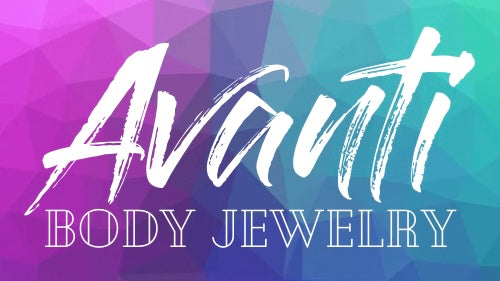
We love piercings, and truly see them as forms of body art and self-expression. But we also know the terminology can be overwhelming - even for those who have been getting piercings for years. In an effort to help you decipher piercings and related body modification terms, below we breakdown some vocabulary. You’ll never confuse the difference between plugs and gauges again!
Your Guide to The Meanings & Definitions for Piercings
- Aftercare
Process of healing and caring for a piercing to ensure they don’t cause harm, infections, or scarring.
- Anti Tragus
A piercing on the ridge of the cartilage (opposite the tragus). Think: above the fleshy part of the ear lobe.
- Barbell
A piercing with a rod that has a ball at either end.| Shop now: barbells.
- Belly Button / Navel Ring
As the name suggests, a belly button piercing - also known as a navel ring - is a piercing that is at the top of the belly button and comes through at the belly button opening.
- Body Modification
This is used to describe any kind of deliberate change or enhancement to the body such as piercings, tattooing, stretching, etc.
- Cartilage
Generally referring to piercings in the ear - cartilage is the tough yet flexible tissue in the body. In fact, 65-80% of cartilage is water- but this number decreases with age.
- Conch (Inner)
This piercing is named after the shell-dwelling sea creature. It goes through the concave portion of your ear - and the piercing is visible beneath the rook and above the anti-tragus/earlobe.
- Daith
A daith piercing is located in the innermost fold of the cartilage of your ear- just over the earhole.
- Forward Helix
This piercing is located in the small, upper ear directly above the tragus. It’s pierced where the helix meets your head.
- Gauges
Gauges and plugs are often used interchangeably, but they are different. Plugs refer to the actual jewelry while gauge is a measurement used for stretched ears. Shop now: Gauges/Plugs.
- Helix
A helix piercing is on the outermost part of the upper ear (think: above the lob on the outermost ring of cartilage.
- Orbital
An orbital piercing is a two-hole piercing, in which the holes are set closer together so that a hoop can be worn instead of a straight barbell.
- Piercing
A hole in the body - ear, belly button, face, etc - made so that you can decorate your body with jewelry or attach it directly to your skin.
- Plugs
Plugs refer to the jewelry that someone with stretched ear lobes could wear. Shop plugs. Shop now: Ear Plugs.
- Scaffold Piercing
The scaffold piercing (also known as industrial piercing) is two piercings connected by a barbell. Generally they’re done on the top portion of the ear between the helix and anti-helix.
- Septum
This is the central cartilage of the nose, dividing the two nostrils. Shop nose piercings: Clickers, Hoops, and Rings.
- Studs
Studs generally feature a gemstone/jewel/crystal mounted ona narrow post that passes through a piercing. Shop now: Studs.
- Threadless Jewelry
Threadless Jewelry is a 2-part system where the jewelry post is pushed into the piercing, allowing a top to be firmly secured from the outside. This allows you to switch out the style of their piercing without any risk of the hole closing as the threadless post can remain in place while interchanging the top. Shop now: Threadless Jewelry.
- Tragus
Your tragus is the little “knobby”piece of cartilage between your earhole and side of your face (located near the middle, inner portion of the ear).
- Transverse Lobe
A transverse lobe piercing is similar to a traditional earlobe piercing, but the jewelry is pierced side to side - not front to back of the earlobe.

